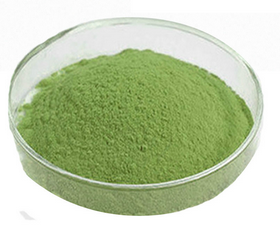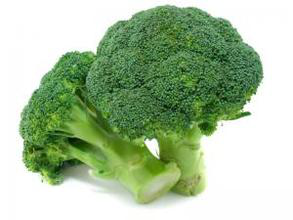Renewable Design for Broccoli powder Wholesale to Orlando
Renewable Design for Broccoli powder Wholesale to Orlando Detail:
[Latin Name] Brassica oleracea L.var.italica L.
[Plant Source] from China
[Specifications]10:1
[Appearance] Light green to green powder
Plant Part Used: whole plant
[Particle size] 60 Mesh
[Loss on drying] ≤8.0%
[Heavy Metal] ≤10PPM
[Storage] Store in cool & dry area, keep away from the direct light and heat.
[Shelf life] 24 Months
[Package] Packed in paper-drums and two plastic-bags inside.
[Net weight] 25kgs/drum
Broccoli is a member of the cabbage family, and is closely related to cauliflower. Its cultivation originated in Italy. Broccolo, its Italian name, means “cabbage sprout.” Because of its different components, broccoli provides a range of tastes and textures, from soft and flowery (the floret) to fibrous and crunchy (the stem and stalk). Broccoli contains glucosinolates, phytochemicals which break down to compounds called indoles and isothiocyanates (such as sulphoraphane). Broccoli also contains the carotenoid, lutein. Broccoli is an excellent source of the vitamins K, C, and A, as well as folate and fiber. Broccoli is a very good source of phosphorus, potassium, magnesium and the vitamins B6 and E.
Main Function
(1).With the function of anti-cancer, and effectively improving capability of blood scavenging;
(2).Having the great effect to prevent and regulate hypertension;
(3).With the function of enhancing liver detoxification, improve immunity;
(4).With the function of reducing blood sugar and cholesterol.
4. Application
(1).As drugs raw materials of anti-cancer, it is mainly used in pharmaceutical field;
(2).Applied in health product field, it can be used as raw material in health food, the purpose is to enhance immunity
(3).Applied in food fields, it is widely used as functional food additive.
Product detail pictures:

Related Product Guide:
To constantly improve the management system by virtue of the rule of "sincerely, good faith and quality are the base of enterprise development", we widely absorb the essence of related products internationally, and constantly develop new products to meet the demands of customers for Renewable Design for Broccoli powder Wholesale to Orlando , The product will supply to all over the world, such as: Swiss, Mumbai, Montreal, Based on experienced engineers, all orders for drawing-based or sample-based processing are welcomed. We have now won a good reputation for outstanding customer service among our overseas customers. We will continue to try the best to supply you good quality products and solutions and the best service. We've been looking forward to serving you.
Visit https://bit.ly/Ir9kQU for more information and solutions.
Mango is loaded with Vitamin C which helps prevent premature ejaculation and increase libido. It is also loaded with Vitamin E — a known nutrient to increase sex hormones
Pumpkin is loaded with phosphorous which is directly linked to sex drive. It also has niacin which has blood dilating effects to increase tactile sensations, and it contains zinc, which is important in testosterone production
Seasonal Berries contain resveratrol, which does many things including
the prevention of premature aging, increase of blood flow to the right organs
and helps to reduce blood pressure
Watermelon Contains citrulline which has the power to relax blood vessels by boosting nitric oxide and giving a similar effect to viagra
Beetroot is high in boron, a mineral which stimulates the production of sexual hormones
the root of the ginseng plant has been used for centuries in traditional Chinese medicine
…including as an aphrodisiac
Cinnamon is a great source of manganese, fiber, iron and calcium also known as an effective remedy for many things including sexual libidos
nutmeg possesses aphrodisiac activity, increasing both libido and potency
YOU CAN PURCHASE AMERICAN GINSENG AND CHINESE RED GINSENG AT THE LINK BELOW:
https://tinyurl.com/organic-ginseng
YOU CAN SUPPORT MY WORK BY PURCHASING PRODUCTS THROUGH ANY OF THE LINKS BELOW:
https://tinyurl.com/grass-fed-meats
https://tinyurl.com/surthrival-homepage
https://bit.ly/hyperionherbs
https://bit.ly/mountain-rose-herbs
https://bit.ly/dragondoor
YOU CAN MAKE A DONATION ON MY SITE USING THE PAYPAL BUTTON ON THE RIGHT HAND SIDE OF THE PAGE AT THIS LINK:
https://www.secrets-of-longevity-in-humans.com/secrets-of-longevity.html
SET UP PHONE OR EMAIL CONSULTATIONS WITH ZAK HERE:
https://www.secrets-of-longevity-in-humans.com/anti-aging-advice.html
************************************
FOLLOW SECRETS OF LONGEVITY ON TWITTER:
https://twitter.com/longevitytips
CLICK LIKE ON THE SECRETS OF LONGEVITY FACEBOOK PAGE:
https://www.facebook.com/secretsoflongevity
This enterprise in the industry is strong and competitive, advancing with the times and develop sustainable, we are very pleased to have a opportunity to cooperate!







